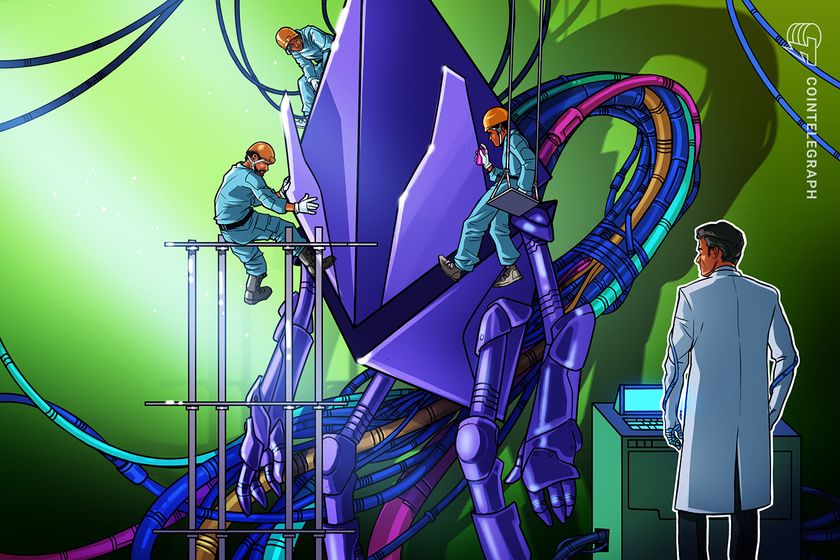

Key takeaways:
-
ETH price has underperformed its peers during the current bull market, but gas sponsorship could lure developers and traders back to the network.
-
Ethereum’s upcoming Pectra upgrade promises to improve staking efficiency, potentially increasing demand for ETH.
-
Data suggests ETH price bottomed. Will the Pectra narrative reignite bullish momentum?
Since 2024, ETH (ETH) has been more of a meme than a market mover. Unlike most of its rivals, ETH still hasn’t reclaimed its all-time high of $4,870 from November 2021, and it regularly underperforms even in the weak altcoin market. Currently, ETH trades at $1,813, down 56% from its local peak in December 2024.
Despite the dismal price action, dismissing Ethereum as a relic may be premature. The network continues to evolve, and the upcoming Pectra upgrade scheduled for May 7 could rekindle market interest. By addressing long-standing user experience challenges and improving staking, Pectra may help Ethereum narrow the competitive gap with rivals like Solana and BNB. What’s more, it could potentially serve as the catalyst that brings ETH price back into the spotlight.
What are Pectra’s key upgrades?
The Pectra upgrade introduces 11 Ethereum Improvement Proposals (EIPs) aimed at strengthening Ethereum across three dimensions: scalability through layer-2s, user experience (UX), and staking efficiency. Scalability remains Ethereum’s most persistent challenge, and critics argue that monolithic L1s would consistently outperform modular L2-based architectures. However, the UX and staking improvements in Pectra could have truly meaningful implications for Ethereum and ETH’s market dynamics.
The standout upgrade is EIP-7702, which allows externally owned accounts (regular user wallets) to temporarily act like smart contracts. This unlocks features such as fee sponsorship and gas payments in tokens other than ETH.
These enhancements could make Ethereum significantly more user-friendly, lowering entry barriers, enabling DApps to sponsor new users’ gas fees, and improving wallet functionality with less friction. This is particularly relevant for onboarding non-technical users in gaming, payments, and mobile apps, which continue to face hurdles due to poor UX.
Another positive aspect is that the option to pay gas fees with tokens other than ETH won’t diminish ETH’s role in the network. At the protocol level, validators will continue to receive fees in ETH, while payment processors will have to convert the fee tokens into Ether.
On the staking side, EIPs 7251, 6110, and 7002 will also bring major changes. allow validators to hold up to 2,048 ETH instead of just 32, and significantly simplify validator onboarding and exits. Validators will be able to stake up to 2,048 ETH instead of just 32, and the onboarding and exit processes will become more seamless. These changes are especially meaningful for institutional validators. As disappointed institutions are starting to sell their ETH holdings, this upgrade could stimulate renewed engagement from big players.
Will the Pectra upgrade affect ETH price?
Ether’s price reflects the market’s expectations around its future demand, driven by its use to pay gas fees, and the dynamics of its supply. The Pectra upgrade is designed to strengthen both sides of that equation: increasing demand while reducing available supply.
On the demand side, a significantly improved user experience could attract mainstream users and developers, accelerating adoption and onchain activity.
On the supply side, streamlined and institution-friendly staking mechanisms may lead to more ETH being locked in validator nodes, tightening the circulating supply and potentially exerting upward pressure on price. Furthermore, if more innovative wallet features fulfill their promise of driving user adoption, the increased transaction throughput will also accelerate ETH burning, reducing the supply even further.
Data shows Ethereum is currently experiencing one of its lowest burning periods ever, around 70 ETH per day, compared to 2,000 to 4,000 ETH in 2024. A resurgence in activity could push the burn rate higher, adding deflationary pressure that may support the price.
Related: Ethereum is destroying the competition in the $16.1T TradFi tokenization race
Can Pectra spark an ETH price trend reversal?
Pectra is set to add powerful features to Ethereum, but their impact may take time to materialize. In the meantime, the upgrade could provide the narrative ETH needs to regain market momentum.
Technically, the setup looks favorable. ETH appears to have already formed a local bottom, with the weekly RSI — often a reliable reverse signal — breaking out of its downtrend on April 20. This marks the end of a correction that lasted since December 2024 and wiped out as much as 66% of ETH’s value. A new uptrend could be underway, but could Pectra be its trigger?
Historically, Ethereum upgrades often coincided with short-lived price spikes that often failed to create momentum. In 2022, the Merge was overwhelmed by bear market sentiment. The Shapella in 2023, which enabled stake withdrawals, struggled to sustain momentum. The 2024 Dencun upgrade, which improved L2 integration, marked the end of the March rally.
However, the market cycle is now in its third year, just like in 2021, when Ethereum’s Berlin and London upgrades (improving gas pricing and introducing burning) helped fuel a major bull run. If history rhymes, Pectra could sync with the broader rally and mark Ethereum’s return to strength.
Looking ahead, the Fusaka hard fork scheduled for late 2025 could add further upside potential to Ether.
This article does not contain investment advice or recommendations. Every investment and trading move involves risk, and readers should conduct their own research when making a decision.
